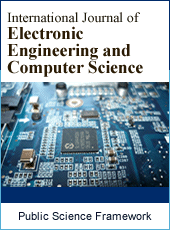International Journal of Electronic Engineering and Computer Science
Articles Information
International Journal of Electronic Engineering and Computer Science, Vol.5, No.2, Jun. 2020, Pub. Date: Nov. 6, 2020
Cancer Recognition Based on Deep Residual Network
Pages: 15-21 Views: 1868 Downloads: 349
[01]
Xinlin Yang, School of Information Engineering, China University of Geosciences, Beijing, China.
[02]
Guanyi Li, School of Information Engineering, China University of Geosciences, Beijing, China.
[03]
Xiaotong Li, School of Information Engineering, China University of Geosciences, Beijing, China.
[04]
Mei Li, School of Information Engineering, China University of Geosciences, Beijing, China.
Cancer has become a great threat to people's health due to its high mortality rate. According to the global statistics in 2018, the incidence and mortality of male lung cancer account for the first place in malignant tumors. The recognition of early cancer by medical imaging technology can reduce the mortality of cancer. In image recognition, many image features that are difficult to be detected by human eyes can be found with the help of deep neural network. The application of deep residual network structure to medical image recognition can improve the accuracy of recognition and alleviate the problem of gradient disappearance caused by increasing depth in deep neural network. This paper USES RESnet-50 in the deep residual network to identify the categories of pulmonary nodules. According to the label information on the picture, label the picture of pulmonary nodules to be identified by type. The model was trained through the LIDC-IDRI data set, and the samples on the data set were tested using the trained RESnet-50 network architecture. The final identification accuracy was stable at 0.93. By comparing the recognition accuracy of other networks, the architecture can improve the recognition accuracy. The technology will reduce the work intensity of doctors to reduce the rate of misdiagnosis, and realize the early detection and treatment of cancer.
Deep Learning, Convolutional Neural Networks, ResNet-50, Residual Network, Lung Nodules, Cancer Recognition
[01]
Zhang Chunyun, Zhai Yanping, Chen Lu, Tong Da, & Li Shiyue. (2016). Research on the correlation between human papillomavirus and non-small cell lung cancer in Guangdong. International Journal of Respiration, 36 (22), 1699-1702.
[02]
Zhang Tingting, Qu Ning, & Zheng Pu. (0). Application of machine learning in the diagnosis and treatment of thyroid tumors. Chinese Journal of Cancer, 27 (12).
[03]
Zhang Xiaoyu. (2019). The comparison of mixed reality target recognition technology and yolo algorithm. Microprocessor, 040 (005), 53-59.
[04]
Yang Xihui. (2017). Collaborative filtering model based on fusion convolutional neural network. Software Guide, 016 (012), 44-48.
[05]
Sun Yanfeng, Qi Guanglei, Hu Yongli, & Zhao Lu. (2015). Deep convolutional neural network recognition algorithm based on improved fisher criterion. Journal of Beijing University of Technology (06), 835-841.
[06]
Ma Chengxian, & You Yachen. (2019). Discussion on crack location identification and target detection methods of railway bridges. Railway Survey, 045 (005), 136-141.
[07]
Zhang Zhuping. (0). Research on high-accuracy pedestrian detection algorithms. (Doctoral dissertation).
[08]
Xie Bo. (0). Research on intrusion detection model based on ResNet. (Doctoral dissertation).
[09]
Wang Chenglong, Huang Yufeng, Zhuang Xuemin, & Xie Heng. (2018). Research on potato malformation detection method based on deep learning. Journal of Huizhou University, 38 (003), 61-66.
[10]
Zhao Pengfei. (0). Research on the detection and classification of small lung nodules based on convolutional neural network. (Doctoral dissertation).
[11]
Gu Jingping. (2017). Research on data Processing Technology based on CT image set surface Modeling (Master's thesis, Nanjing Normal University).
[12]
Wang Houhua. (2018). Study on the Detection Algorithm of pulmonary nodules in medical Images based on Deep learning (Master's thesis, Xidian University).
[13]
Lei Zhenyu, Wang Jianxiong, Lin Xiaosen, Xu Jia & He Li. (2013). An Introduction to Heterogeneous computing system based on GPU massive Parallel Computing. Modern Cinema Technology (12), 24-29.
[14]
Tang Xueting. (2009). Environment Recognition of Mobile Robots based on Neural Networks (Master's thesis, Xiamen University).
[15]
Wang Qiuhong. (2017). Research on single Low-illumination Image Enhancement Algorithm based on image fusion (Master's thesis, Xiamen University).

ISSN Print: Pending
ISSN Online: Pending
Current Issue:
Vol. 6, Issue 3, September Submit a Manuscript Join Editorial Board Join Reviewer Team
ISSN Online: Pending
Current Issue:
Vol. 6, Issue 3, September Submit a Manuscript Join Editorial Board Join Reviewer Team
| About This Journal |
| All Issues |
| Open Access |
| Indexing |
| Payment Information |
| Author Guidelines |
| Review Process |
| Publication Ethics |
| Editorial Board |
| Peer Reviewers |


